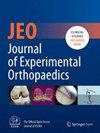A small notch width index, steeper medial and lateral tibial slope and higher lateral/medial tibial slope ratio are relevant knee morphological factors for ACL injuries in skeletally immature patients—A systematic review
Abstract
Purpose
The incidence of anterior cruciate ligament (ACL) injuries in skeletally immature patients has drastically increased over the last decades. Morphology of the knee might play an important role. This literature review provides a systematic overview of knee morphological factors relevant to ACL injury in skeletally immature patients. The hypothesis of the present study is that multiple knee morphological parameters—such as a steep medial and lateral tibial slope (MTS and LTS) and a narrow intercondylar notch—can be identified as potentially relevant factors for ACL injury in this population.
Methods
Systematic review according to PRISMA guidelines. MEDLINE, Embase and Cochrane were searched in December 2023 for studies reporting on knee morphology and ACL injury in skeletally immatures. The following inclusion criteria were used: English/Dutch studies, full-text available, human studies and skeletally immature patients. Parameters with clinical homogeneity and presented in two or more studies as means with standard deviation were included in a meta-analysis using RevMan. Parameters that could not be included in the meta-analyses were presented in a descriptive manner.
Results
After screening 1825 studies, a total of 18 studies were included, of which 16 studies had parameters included in the meta-analyses. These studies investigated 31 knee morphological factors for ACL injury in skeletally immatures. Meta-analyses identified a smaller notch width index (NWI) (0.25 vs. 0.26, mean difference: −0.02 95% confidence interval [CI]: −0.03 to −0.01, p ≤ 0.00001) steeper MTS and LTS (4.8° vs. 3.6° (mean difference: 0.55° 95% CI: 0.09–1.01, p = 0.02) and 4.3° vs 2.8° (mean difference: 2.04° 95% CI: 0.75–3.32, p = 0.0003), respectively) and higher LTS/MTS ratio as risk factors for ACL injury in skeletally immature patients.
Conclusions
A small NWI, steeper MTS and LTS and higher LTS/MTS ratios were identified as relevant knee morphological factors for ACL injuries in skeletally immature patients.
Level of Evidence
Level III.

 求助内容:
求助内容: 应助结果提醒方式:
应助结果提醒方式:


